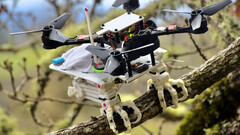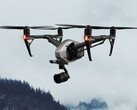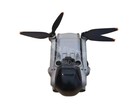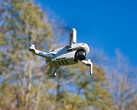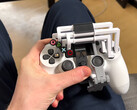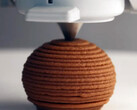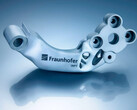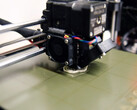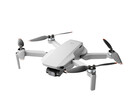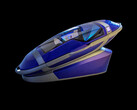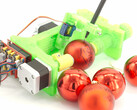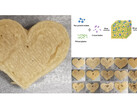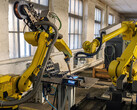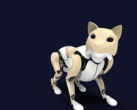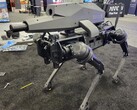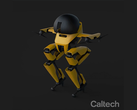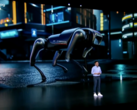Scientists keep getting inspired by nature in unexpected ways, and the latest research project out of Stanford is just another example of biomimicry. A team of Stanford University engineers - Mark Cutkosky and David Lentink - have created a robotic quadcopter that can land on tree branches and perch there. The bird-inspired drone mimics the clawing and balance needed to grasp and hold tree branches of various shapes and textures that the feathery creatures take for granted every day. The thinking behind the perching robot project is that, instead of hovering and wasting battery range, the birdified drone can perch and still survey an area, doing whatever its task at hand is with much less energy expenditure.
The researchers used five high-speed cameras to record the take-off and landing of parrotlets - the second smallest species of parrots - on various surfaces. The faux branches included materials as varied as wood, foam, sandpaper, or even Teflon, equipped with sensors that recorded the parrotlets' force and points of contact while perched. According to William Roderick, Ph.D. ’20, who was a graduate student in the Stanford University engineers labs:
It’s not easy to mimic how birds fly and perch. After millions of years of evolution, they make takeoff and landing look so easy, even among all of the complexity and variability of the tree branches you would find in a forest. What surprised us was that they did the same aerial maneuvers, no matter what surfaces they were landing on. They let the feet handle the variability and complexity of the surface texture itself.
Said feet are exactly what the Stanford engineers tried to replicate in their research labs quite successfully, resulting in the SNAG drone that can perch like birds. SNAG stands for Stereotyped Nature-Inspired Aerial Grasper precisely because the birds do the same maneuver each time they approach a branch to land. SNAG has the legs of a peregrine falcon modeled with 3D-printed bones, motors for muscles, and a fishing line for tendons.
Once wrapped around a branch, SNAG’s ankles lock and an accelerometer on the right foot reports that the robot has landed and triggers a balancing algorithm to stabilize it.
The SNAG robotic bird has shown such promising results in the landing, balancing, and taking off activities that the researchers are now aiming to improve its situational awareness while in the air instead of its legwork while perched.




